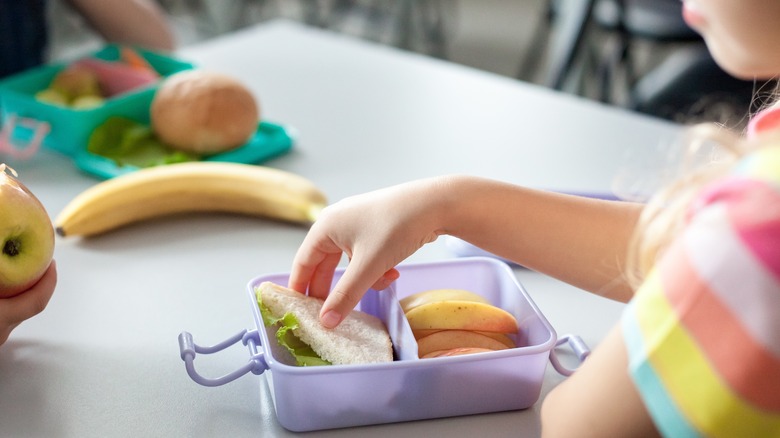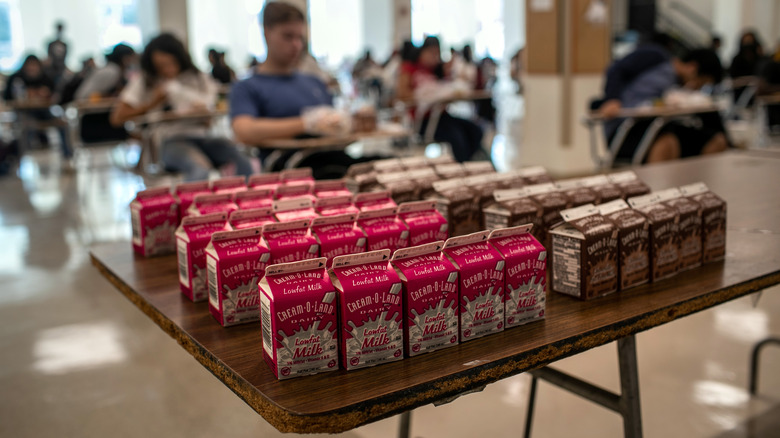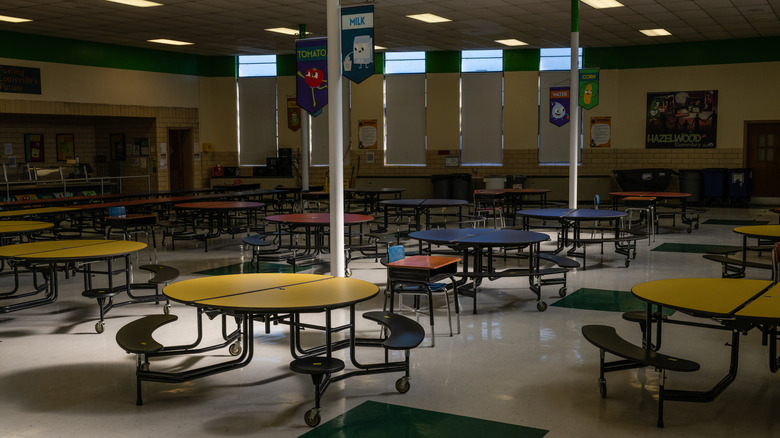Inflation, Supply Chain Issues Have Changed Public School Cafeteria Food
For those who grew up going to public school, cafeteria food may feel like a given. Historically, however, that isn't really true. It wasn't until the start of the 20th century that most U.S. states required children to attend school and, at the behest of welfare organizations, individual districts began providing lunches to their pupils. The federal involvement didn't get involved until the Great Depression led to a country-wide food scarcity, and school lunches didn't go nationwide until the 1940s.
It hasn't been smooth sailing since, either. In the '80s, the government slashed budgets for lunches in order to reduce spending. These days, inflation, labor shortages, and supply chain issues are changing public school lunches even more drastically. In March of 2023, NBC News reported that, because of increasing costs, many distributors are raising prices on key ingredients and other supplies, forcing schools to make some tough decisions to keep their lunch programs afloat.
Schools struggle to fill plates
As prices increase, foodservice providers are finding that working with public school cafeterias isn't profitable. Schools have strict dietary requirements and small budgets, which makes them unappealing clients for businesses trying to increase revenue. This has resulted in late or missed deliveries, price hikes that schools can't afford, and, in some cases, broken contracts between schools and providers. Even worse, schools are receiving fewer bids from contractors for future deals, leaving educators unsure of what lies ahead.
This issue is also affecting the kids. A federal free lunch program was instituted during the height of the pandemic, but ended in summer 2022. According to data from the Bureau of Labor Statistics, school cafeteria food prices have increased over 300% year-on-year. Not all students can afford these inflated costs, yet many of them don't qualify for free or reduced-priced meals, either. As a result, families are going into meal debt alongside the schools.
What are the potential solutions?
There are many fixes on the table. Presently, numerous public school cafeterias are cutting corners by serving kid-friendly finger foods when they can't source plastic utensils. Sometimes, cafeterias are forced to serve food that doesn't meet government guidelines. Some schools have had to shorten their contracts to satisfy their old providers, or have turned to new ones, such as grocery stores.
Another potential solution is to encourage pupils to apply for free or reduced-price meals; if a high enough percentage of the student body qualifies, the entire school will receive free food from the government. In really dire situations, schools are even considering cutting staff in order to pay for student lunches.
In the end, however, real change may need to come from higher up. As reported by Foodservice Director, a federal bill was introduced in March 2023 that would raise the reimbursement rate for school meals. In theory, this would lessen pressure on both schools and students. The bill has the backing of the School Nutrition Association, yet some faculties worry that the rates won't keep up with inflation. On a state level, other recently introduced bills propose the creation of new farm-to-school programs, procuring supplies from local sources, providing meal reimbursements, and establishing universal free meal programs.


